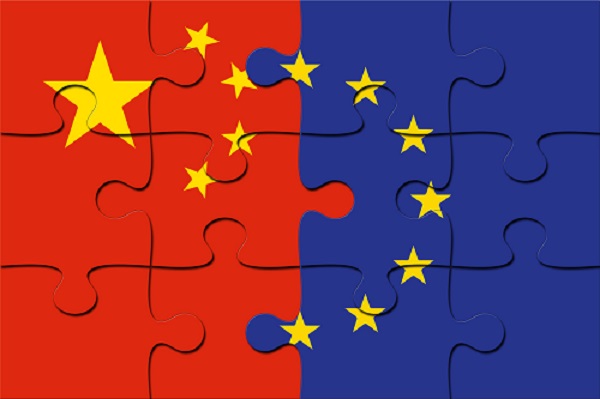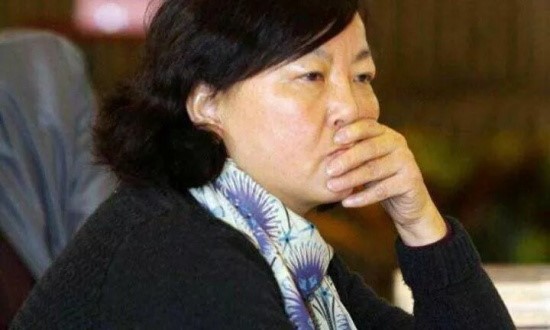Mohd. Adnan, Research Intern, ICS
Before the outbreak of Covid-19 pandemic in the United States, Sino-US relations were seemed to be heading towards achieving a bit of normalcy through agreeing the ‘phase one’ trade deal in mid-January 2020. The trade deal was achieved after a round of heated negotiations lasting over a year, when the US formally announced the imposition of tariffs on Chinese imports, in March 2018. This partial trade deal was considered to be a beginning of the US-China collaboration and normalisation of their strained bilateral relations. However, the outbreak of COVID-19 in the US has prompted many in the US administration, specifically US President, to question the Chinese intentions and its handling of Covid-19 pandemic. In response, China questioned United States’ handling of the Covid-19 pandemic. A war of words has taken place from the both sides over the origin and handling of Covid-19 outbreak since early March. Amid the accusations and blame game from both sides, the relations between these two countries significantly deteriorated in the last two months. Amid the unfolding of COVID-19, this blog post explores whether the United States’ belligerent approach towards China in last two months is mere a tactic to gain domestic support regarding the upcoming election or Sino-US relations are, indeed, moving towards a new height of confrontations.
In late January-early February 2020, amid the backdrop of crucial signing of ‘phase-one’ trade deal, it seemed US-China bilateral relations were heading towards normalcy. While China was struggling to contain the Covid-19 outbreak, US President, Donald Trump, on multiple occasions, had praised China’s professionalism and transparency in handling the Covid-19 outbreak. However, in early March, all these changed, when the cases of Covid-19 started to increase in the US. The Trump administration started to question China’s handling of pandemic. There is little doubt that the pandemic had its origins in China and initially, there was cover up by Party-state at the level of Wuhan. But the criticisms on China’s non-transparency, which did cost the world, shouldn’t be seen as a free pass to the US. Even though the World Health Organisation (WHO) declared the outbreak a ‘Public Health Emergency of International Concern’ on 30 January, many countries including the US did not give the virus outbreak serious attention, delaying formulation of effective measures to contain it.
COVID-19 pandemic has inflicted significant human and economic costs to the US -at the time of writing this, around a million people have been infected and above seventy thousand have succumbed to death. Further, US economy has taken a serious hit and the real extent of this damage will only surface once the situations started to normalise, with many equating it with the Great Depression before the World War II. Unemployment rate in US has hit record high more than 22 million people have applied for financial aid as of mid-April. According to the ‘advance’ estimate data provided by Bureau of Economic Analysis, United States’ real gross domestic product has contracted 4.8 per cent in the first-quarter of 2020 and it is expected the things will get worse before improving in the second half of the year. The US President’s repeated statements to open economic production at the earliest, indicates the desperation of the administration in an election year.
The approval rating of President Donald Trump has declined since the outbreak of Covid-19. In an article published by CNBC on 25 April, it was noted, ‘in January, (US president) Trump planned to run for re-election on the strength of a booming economy and a pledge to keep fighting the “deep state” government bureaucracy. But that all ended as soon as the coronavirus pandemic gained a foothold in the United States’. To augment this argument, on April 17, in a leaked report obtained by Politico, the National Republican Senatorial Committee sent a 57-page written Memo to its electoral candidates advising how to counter the candidates of the Democratic Party. In the short version of this Memo, Republican candidates have been advised to follow China-centric issues; like how China caused this pandemic by ‘lying’ and ‘covering it up’ and ‘hoarding of medical equipment’. Further, it also advised to present, China as an ‘adversary’ and the Democratic candidates, as ‘soft on China’, while Republicans were ‘tough’, being capable of confronting China. Moreover, on 29 April, in an interview with Reuters news agency, Trump directly accused China of seeking his loss in his re-election bid. It seems that the delicate predicament that emerged due to the COVID-19 has prompted the Trump administration to shift the blame towards China in the run up to the Presidential election in November 2020.
Moving on, the recent blame game and deteriorating relations between the US and China is not only limited to domestic compulsions but they are, indeed, moving towards a new height of confrontations. Along with the United States’ belligerent postures, China, too, has adopted an aggressive and assertive approach, which has not been seen in recent years. In the process of blaming each other, a war of information has taken place between the US and China. While Beijing was busy to burnish its image and enhance legitimacy – tarnished by its initial mishandling of the outbreak – by sending medical teams and equipment around the world to assist the fight against COVID-19, Washington DC used every opportunity to ratchet up tensions, starting with multiple accusations on China’s non-transparency and suppression of crucial information. In mid-April, President Trump even questioned the authenticity of Chinese data on the infected cases and reported deaths.
In retaliation, China accused that the US was unable to handle the pandemic therefore it is trying to shift the blame. Theories such as ‘Corona virus was brought by the US military in Wuhan’ and ‘Chinese model of governance is better than the democracy’ were also propagated. On 28 April, amid the accusations of ‘covering up’ and not being ‘transparent’, China’s Executive Vice Foreign Minister, Le Yucheng, in an interview with NBC questioned United States’ handling of the outbreak and denied the accusations that China has ‘covered up’ and ‘under-reported’ the Covid-19 cases and deaths. He further added, ‘unfortunately, some political figures are politicizing this Covid-19. They are using this virus to stigmatize China. This is not something we are willing to see’. In this war of information to enhance one’s legitimacy and degrade the other, questions have also been raised over the role and authenticity of WHO; the US administration has even halted their funding to the WHO, accusing them of complicity in Beijing’s initial cover-up.
The US is targeting China’s State Owned Enterprises (SOE) – earlier in April, several US executive agencies urged the Federal Communications Commission (FCC) to revoke the license of operation of China Telecom in US territory, citing risks for national security. In this regard, the FCC sent a ‘show cause’ notice to three state-controlled Chinese telecommunications operators including China Telecom. The US is also planning to impose severe restrictions on its own companies from exporting certain technological products, especially the semiconductor production equipment, to companies related with Chinese military.
Amid the devastating effect of COVID-19, world’s reliance on China for essential supply has come into spotlight. The call to bring back home or relocate major US companies’ production units away from China in the height of trade confrontation has intensified. Earlier in April, Larry Kudlow, US National Economic Council Director, advocated the same by ‘paying moving costs’. Further, several US Senators have also been voicing the same in order to reduce dependency for essential supplies.
Issues such as South China Sea dispute, Hong Kong protests, Taiwan, and human rights have been flaring-up between these two states. The pandemic has not constrained China in being assertive in South China Sea – it placed the administrative jurisdictions of Spratly and Parcel Islands under the Sansha administrative unit – a city in the island of Hainan. Apart from that, China has also collided with other claimant countries in the disputed South China Sea. In early April, a Vietnamese fishing boat was drowned by a Chinese maritime vessel. Various other incidents have occurred where Chinese coastguard vessels have been seen posturing aggressively in the whole region including South China Sea. In response to this, the US has increased its maritime patrolling in the disputed area; US warships have sailed through the disputed areas on two separate occasions evoking harsh criticism from China.
The Taiwan issue has remained contentious in US-China relations. While, over the years, Beijing, has been trying to curb Taiwan’s remaining diplomatic relations. The US, on 26 March, enacted a law called as ‘The Taiwan Allies International Protection and Enhancement Initiative, which requires the US, to assist Taiwan in acquiring memberships in international organisations where statehood is not a precondition and also proposes to take unspecified action against countries which ‘undermine the prosperity and security of Taiwan’. This move by the US, expectedly, drew severe criticism from China accusing the US of ‘interfering’ in its internal matters by ‘violating’ the principle of ‘One China’ Policy.
While it appears, to a large extent, that the recent anti-China rhetoric by the US administration is politically motivated by domestic electoral compulsions, there are factors that go beyond that. These recent developments only indicate the further deterioration of relations between both the countries. It may be surmised that the trade deal will not necessarily reduce the tensions. Until the US continues to perceive China as a challenger to its hegemony, it is unlikely that relations between them will be of mutual collaboration and cooperation.

